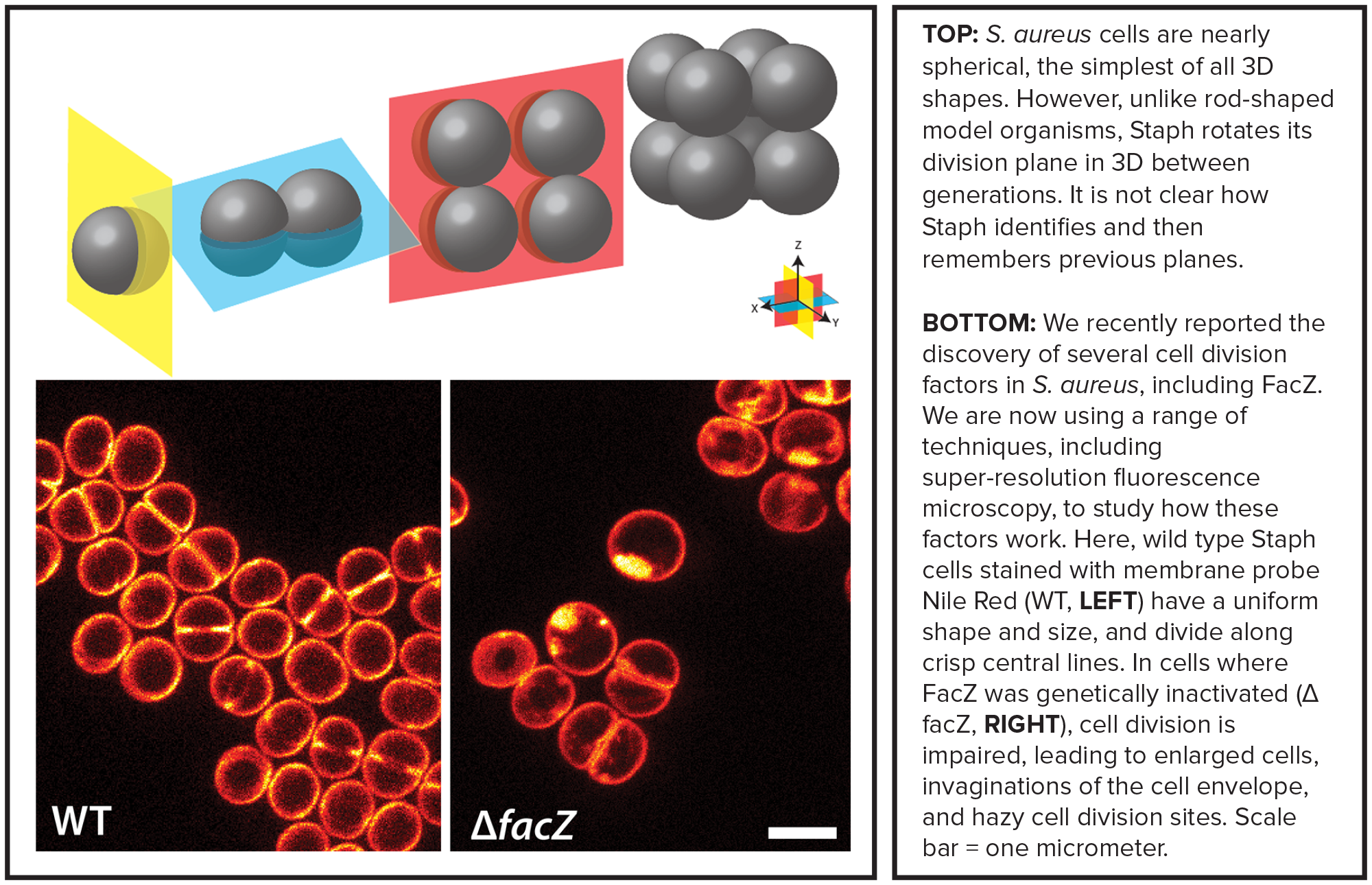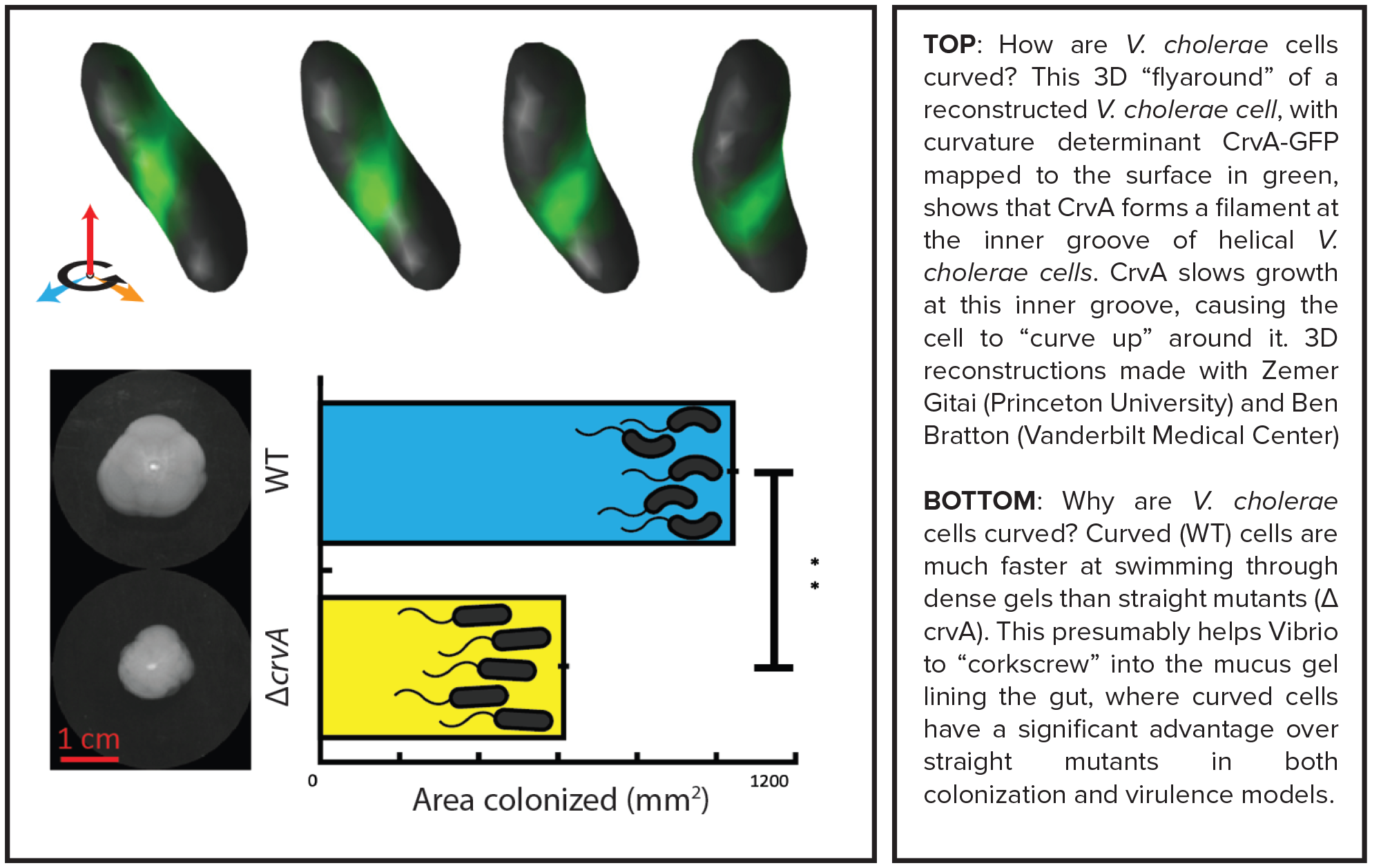Research Projects

Staphylococcus aureus – a study in cellular symmetry
S. aureus is the leading cause of soft-tissue infections in the United States. Unlike straight-rod model organisms, Staph has an unusual “cluster of grapes” morphology. Despite decades of study, surprisingly little is known about how Staph coordinates its cell envelope growth to achieve this unique shape. For example, where rod-shaped model bacteria divide perpendicular to their long axis, it is not clear how Staph identifies mid-cell to divide. Furthermore, rod-shaped cells maintain a fixed angle of division across generations, while Staph rotates its division plane in 3D between successive cell cycles. Critically, some strains of Staph, including the notorious methicillin-resistant S. aureus (MRSA), have alterations in their cell envelope that make them difficult to treat with antibiotics, underlining the importance of understanding Staph’s unusual growth plan. Our studies have identified a wealth of new shape determinants, including FacZ, the first division-site placement factor discovered in Staph or any other round bacterium. Our lab draws on a “toolbox” of molecular/cell biology techniques including molecular genetics, next-generation sequencing, protein biochemistry, and super-resolution microscopy to explore how these newly-discovered factors function in cell envelope growth, morphogenesis, antibiotic resistance, and infection biology.

Vibrio cholerae – a model for dynamic complexity
V. cholerae causes the epidemic diarrheal disease cholera, which kills tens of thousands a year in the developing world. In contrast to symmetrical Staph, V. cholerae grows into a complex corkscrew shape. During my PhD thesis in Zemer Gitai’s lab, we discovered the CrvAB curvature system of V. cholerae, which generates curvature by slowing growth at the inner groove of the cell. Our work also showed that V. cholerae’s corkscrew curvature helps it to swim faster through dense gels, allowing it to penetrate the gut and cause disease. My new research group is continuing the study of how V. cholerae shape impacts complex phenotypes and contributes to motility and host infection over straight mutants in both colonization and virulence models.

